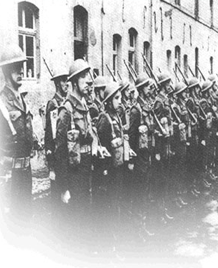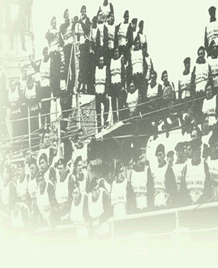 Luxembourg
Luxembourg
List for UN Allies
Background of Participation
Belgium and Luxembourg decided to dispatch a united battalion to South Korea when they were asked by the UN Secretary-General to offer military support for South Korea on July 14, 1950. The Belgian government selected officers and 700 regular soldiers out of 2,000 applicants. Luxembourg also recruited volunteers and formed a platoon of 48 soldiers, which was assigned to the A Company of the Belgian Battalion. The united Belgian/Luxembourg Battalion (hereafter called the Belgian Battalion), led by Lieut. Colonel B.E.M. Crahay, arrived in Pusan on January 30, 1951. They entered the UN camp in Dongrae, where they prepared for combat in Korea.
Activity of the Battalion
The Belgian Battalion moved to Jukjonri, and was attached to the 15th Regiment of the US 3rd Division on March 6th in order to participate in Operation Ripper. Pressing hard on the CCF, the Battalion advanced to Dongduchon via Euijungbu, and was assigned to the British 29th Brigade on March 30th. It was deployed in the Mt. Kuemgul region, north of the Imjin River on April 19th. But the Belgian unit became isolated north of the Imjin River when the Chinese April offensive blocked its way of retreat on midnight of April 22nd. During the daytime of the 23rd, the US 3rd Division and the British 29th Brigade attempted to rescue the Belgian soldiers in vain. In the evening, they successfully broke through the enemys interdiction line under air covering and retreated to Jonkok.424 Belgian soldiers and 43 Luxembourg soldiers returned to their own countries with the expiration of the first participation period on August 19th. Thus, the number of soldiers in the Battalion was reduced to 500. Thereafter, they moved to Pochon, where they were attached to the US 3rd Division on August 31st, armed with US equipment.The Battalion moved to Hakdang-ri, south of Pyongkang and constructed an advanced position at Hill 388. CCF attacked the position for 3 days from October 11th. The Battalion secured the Hill 388 by repelling Chinese forces.During 1952, the Belgian Battalion concentrated its efforts on patrolling near theâS shaped bend of the Imjin River, without incurring a major fight, although it suffered some casualties by enemy shelling. On January 26, 1953, the battalion moved to the Kimhwa region where it was deployed in the main resistance line near Jakol, west of Kimhwa.
From March 9th, the Chinese army attacked the Carol outpost position three times, but the Battalion deterred them. The CCF, which failed in the three consecutive attacks, launched a larger scale offensive against the Battalion on April 18th, but they retreated again with failure. After this fighting, a honorous combat ribbon to commemorate the victory in Jakol was attached to the flag of the Battalion.The Battalion launched a surprise attack on July 2nd in order to recover the Carol outpost which had been taken by Chinese forces on June 14th. The Battalion regained the outpost easily thanks to its experience in the region. However, the enemy took it over again with a counterattack.
Belgium dispatched 3,498 soldiers to Korea. Among them, 104 were killed, and 336 wounded. They withdrew from Korea in June 1955. As for Luxembourg, two were killed and 15 wounded out of 110 participants in the Korean War. The Luxembourg forces withdrew from Korea in January 1953.


